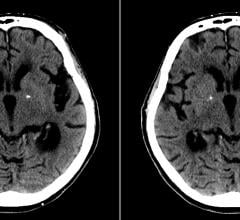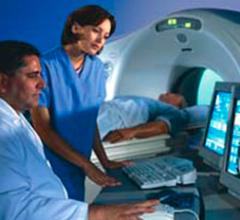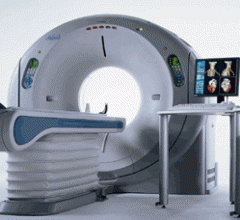
Outpatient care facilities tend to view remarketed or secondary equipment, commonly referred to as used equipment, in one of several ways.
Either it’s a cost-effective and viable way to acquire technology to satisfy a growing patient load or offer a new patient service without the financial commitment of buying new or it’s merely a sound economic decision to avoid booking a depreciable asset that starts losing value (independent of patient revenue) once it leaves the vendor’s warehouse.
From cash-strapped hospitals to fiscally savvy outpatient care facilities, remarketed equipment can offer providers a primary shot at broadening services and increasing market share.
Still, acquiring a lemon remains a possibility, no matter how remote. Much depends on the vendor’s reputation and skills, the equipment’s upkeep and maintenance and the provider’s buying acumen.
Many of the mistakes that have tarnished the remarketed equipment industry’s reputation or clouded buyers’ perceptions of secondary equipment, however, can be traced to the lack of foresight and thorough planning by the providers themselves as they evaluate options.
“Too many buyers make the mistake of focusing on the lowest offer price with insufficient regard to the longer term costs of ownership, and the quality of the installation and subsequent in-service experience,” said Tony Richardson, marketing director, OSI-Oncology Services International, Ramsey, NJ. “At its simplest, acquisition cost might involve extra products and service to make a solution work. At the worst, these necessary add-on items may be difficult to obtain and customers often get frustrated that their time and money is being wasted by suppliers who point fingers and cannot handle the whole job.
“In the field of complex medical capital equipment such as linear accelerators the unit must be integrated into a workflow, and many unwary buyers don’t realize that their solution may require additional computer and software products or applications training.”
That’s why the initial price tag, while alluring, may be misleading, according to Knut Fenner, vice president, Siemens Proven Excellence Refurbished Systems Division, Siemens Healthcare, Hoffman Estates, IL.
“The biggest mistake providers may make when deciding to acquire used equipment is to only consider the initial purchasing costs and not looking at the purchase from a long-term and cost-of-ownership perspective,” Fenner said. “Even though a used piece of equipment might mean a low initial purchasing price, the risk for additional future costs in the form of potential downtime or repairs needed is much higher.
“In addition, a low price of acquisition often means that no warranty or service contracts are included, and spare parts availability is not guaranteed,” he continued. “OEM-refurbished equipment offers a viable option to solve many of these problems, offering warranties, service contracts, spare parts availability and after-sale support. Most OEMs have an in-depth refurbishment process in place, such as the Siemens Proven Excellence refurbishing program, which ensures that the pre-owned system has been tested and complies with original specifications and performance requirements. This process tends to make OEM-refurbished systems more reliable and keep cost of ownership low.”
John Vano, president, Radiology Oncology Systems Inc., San Diego, cautions against buying obsolete or older equipment because upgrade capabilities can be limited.
“Of course, this depends on the age of the system, and this is why significantly older machines are far less expensive than newer machines,” Vano told Outpatient Care Technology.
“However, we have been surprised to see how many third-party companies have emerged in recent years that capitalize on adding newer technologies to older products. For example, third-party multileaf collimators and EPIDs (electronic portal imaging devices) are now available that can be retrofitted to any make/model linear accelerator system.”
Getting service on used equipment can be a challenge if you’re located in a remote area, according to Vano.
“New equipment vendors (OEMs) have to provide service wherever they sell equipment,” he said. “However, used equipment vendors do not. So if you are looking for a service or warranty contract on a used system, it’s important to ask first. To get around this problem, we offer training to local and in-house service engineers. We can also fly in engineers to service equipment, but this often results in increased costs to the buyer.”
Background, Market Research
Some buyers just don’t do enough homework, observed Craig Palmquist, marketing manager, Genesis Medical Imaging Inc., Huntley, IL.
“A typical mistake is not getting a thorough, complete and accurate inspection report on the potential equipment purchase,” Palmquist said. “In the same regard, providers do not do thorough research on the vendor selling them the equipment. Always get and verify references. Get a site visit if possible. I am always surprised at the lack of planning that providers fail to undertake before purchase, such as siting issues, service planning and business plans. Also, how willing providers are to take the word of a vendor without doing research.”
Richardson, too, remains flummoxed how buyers can be too trusting. “It is surprising, but customers still buy expensive capital equipment from unproven suppliers without even checking out references, or being sure the actual offered piece of equipment is actually owned and available,” he said. “Buyers are frequently disappointed when after a deposit has been paid and scheduled commitments made, the seller backs out because he/she can’t get the machine, or the seller tries to substitute a similar – but not identical – machine. OSI recommends only buying from a company selling inventory it owns and which is in stock.”
Bob Mighell, co-owner and president, World Medical Equipment Inc., Marysville, WA, stressed the need to ask a lot of questions, particularly about the vendor’s process. “Ask to see photo and written documentation of their refurbishing process,” he said. “We photograph the entire process for each piece of equipment we do. This is easily sent to the customer at their request. OEMs do sometimes make it difficult to obtain parts, but the OEMs often buy their parts from other companies, which will sell the parts directly to us for significantly less than the OEM would charge. We have started our own parts department and now sell parts directly to facilities and independent service organizations.”
Mighell also urged buyers to source parts and determine before a piece of equipment is purchased whether the OEM still supports the product with parts.
Prevention is the best cure for mistakes, Vano recommended.
“One extra bit of planning can avoid lots of problems in the future,” he said. Vano also emphasized asking a lot of questions, “especially from sites that have undertaken similar projects as the one you are about to embark on. Deal only with reputable organizations if you plan on getting help during the course of your project. And build a good team for your project – architects, engineers, equipment providers, etc. One simple task that can prevent a lot of headaches is to schedule ongoing conference calls with all team members during the course of the project.”
Furthermore, Mighell argues a semantics issue that can have serious fiscal ramifications. Mighell advised against purchasing anything labeled “used” and strictly focus on purchasing “refurbished equipment. “A used piece of equipment is one you would probably buy directly from a facility, off the Internet or from a wholesaler and will probably be offered as-is,” he said. “The price may be attractive at the time but may end up costing you more in the long run than if you have purchased it from a reputable refurbisher.”
Vano lamented that buyers may face disreputable dealers and vendors. “We are surprised that certain vendors that should have been out of business long ago are still active, doing deals and creating problems,” he said.
“We cannot emphasize enough the need to work with proven, reputable organizations when dealing with used/refurbished equipment,” he continued. “It takes years to build a good reputation and minutes to ruin it. We do everything possible to ensure we never experience those ‘bad few minutes.’ For example, we recently delivered a product to one of our customers that was not up to their expectations. Although the system ran well, rather than upset the client, we replaced the entire system at our expense. Very few firms are willing to stand behind their products in this manner.”
Richardson concurred that reputation really matters. “Buyers can avoid many pitfalls by working with a skilled technically competent specialist equipment supplier and avoiding equipment brokers who at best need to subcontract relocations, equipment refurbishments and field maintenance, and at worst have no idea what is involved in creating a ‘solution’ for their customer,” he noted. “We [at OSI] are motivated to supply reliable equipment, and to propose and supply a complete solution based on customer needs. Furthermore, because we are an integrated company, customers know that the people refurbishing, installing, commissioning and servicing equipment sold by us, all work for one employer and we accept total responsibility for the end result – a satisfied customer – so there is no finger pointing.”
Satisfying the fundamentals can make a difference, too, Mighell indicated. “At World Medical, we treat customers like we would want to be treated,” he said. “That means returning phone calls, providing information, answering questions and following up in a prompt and friendly manner. We don’t pressure people and we don’t leave them hanging waiting for a response. Like any business, we will occasionally run into a snag, but part of being a true quality organization is determined by your response to problems, and on the rare occasion when a problem occurs, we react quickly to ensure that the customer will be completely satisfied with his or her purchase.”
Tips From the Pros Against the Cons
Executives at the remarketed equipment firms with whom OPCT spoke proffered more than a dozen surefire and useful tips on how to acquire secondary technology successfully.
Understand the equipment and how it will integrate and interface into the department, according to Richardson. “Make sure that your supplier understands what you intend to do with the equipment and what it needs to work with and make sure they can confidently answer questions about integration,” he said. “This matters because a missing link can cost major dollars to fix and surprise problems can make life miserable for everyone in your clinic, and especially the person blamed for the mess – you the buyer!”
Know that the unit you have chosen on paper really is what you will get and that it will be delivered in the condition you expect. “Ask for confirmation of serial number. Do a pre-purchase inspection of the supplier’s refurbishment factory and view the actual unit you would buy. Most resellers have no inventory and no factory to show you,” Richardson noted. “It is important to be confident before committing that the deal is real. Anyone can offer a great price on something they don’t have.”
Steve Schwarz, CEO, Acceletronics Inc., Exton, PA, echoed the need for background checks. “One thing to reiterate is that it is wise to consider the track record of the company selling the equipment and to verify that the installer has the proper qualifications and insurances for performing the work,”
Schwarz said. “Also, will the installer be around a year or two or five years from now? Is there good depth of expertise and service coverage?”
Beyond insurance and qualifications is licensure, stressed Kenneth Wolff, president and CEO, RS&A Inc., Rural Hall, NC. “Another item to consider is whether that installer and/or service company is licensed by the state’s radiation protection board to perform service on the equipment in that state,” Wolff noted. “RS&A, like Acceletronics, is licensed to perform the required services on radiation equipment in every state in which we work. We also have developed our own in-house training program to further extend the training of every one of our engineers before they are sent out into the field.”
Check references, and ask critical questions about the quality of the installation and post-sales service. “Happy customers are a good indication of a supplier who will take care of you also,” Richardson added.
Understand your budget parameters and timing requirements, according to Vano. “Almost every start-up facility project we have been involved with has exceeded its initial budget forecast and took longer to complete than expected,” he said. “This especially holds true for sites involving construction and new shielding. Make sure you understand all facets of the project and budget accordingly. One way to avoid these problems is to work with experienced professionals.”
Understand your billing situation and ROIs prior to making a purchase decision, he said. “For example, buying a multi-slice CT scanner can generate higher reimbursements and might be worth the additional cost. Buying a linear accelerator with a multileaf collimator (MLC) can reduce patient treatment times significantly and improve ROI. The same can be said for IMRT and IGRT solutions.”
Don’t wait until the last minute to buy your equipment. “If you’ve invested in the real estate, the construction and the vault, the last thing you want to do is to have your center ready, to be paying the lease on the building and the interest on the loans, and not have the machine ready to image or treat patients,” he warned. “The incremental carrying costs of the machine, and any related storage costs, will often outweigh the carrying costs for everything else.”
Ensure that the equipment has gone through an OEM-refurbishment process and has been tested according to OEM test procedures, according to Fenner. “Only the original equipment manufacturer has access to the service
history of the equipment as well as original spare parts, test procedures and test equipment,” he said. “In addition, only the OEM can provide the latest software updates available and has the knowledge and expertise in working with the equipment.”
Do not only consider the initial purchasing costs but also look at the purchase from a long-term and cost-of-ownership perspective. “Low initial purchasing costs oftentimes mean that warranty is not included and the system has not undergone a complete technical check, including any necessary software and hardware updates,” Fenner noted. “It is important to take the risk for possible future downtime and expenses into consideration.”
Ensure that spare parts availability is guaranteed for at least five years, and that the system warranty is included and service contracts are available, Fenner advised. “Spare parts availability, system warranty and service contracts help to keep potential future costs to a minimum and are therefore important in reducing the risk involved with the purchase of pre-owned equipment,” he said.






 September 03, 2021
September 03, 2021 



